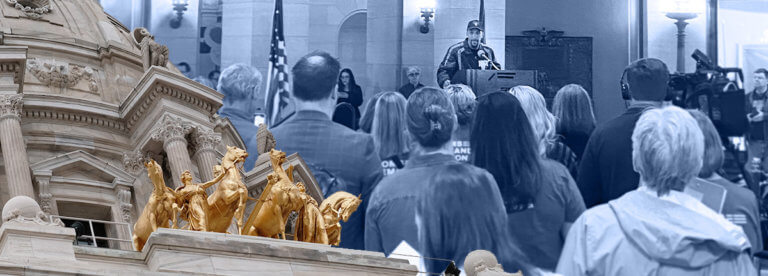The Center for Disease Control is suggesting that in these times of swine flu, if you get sick you should stay home rather than risk spreading the disease to your coworkers:
Influenza is thought to spread mainly person-to-person through coughing or sneezing of infected people. If you get sick, CDC recommends that you stay home from work or school and limit contact with others to keep from infecting them.
The suggestion makes a lot of sense, but it’s not realistic for many American workers. In fact, most people don’t work for employers who provide them with paid sick days:
Currently, nearly 50 percent of private-sector workers have no paid sick days. For low-income workers, the number jumps to 76 percent, and climbs to 86 percent for food service workers. These workers have to decide between the health of themselves and their co-workers, and the wages that they lose by staying home.
Last month, a Minnesota House committee approved the Healthy Families, Health Workplace Act (Senate companion) to provide all Minnesota workers with paid sick days.
The Healthy Families, Healthy Workplace Act – modeled after the San Francisco ordinance – would guarantee all workers one hour of paid sick time for every 30 hours of work with a maximum of nine days a year. Small businesses with 10 or fewer employees would only be required to provide five days of paid sick leave per year.
In Minnesota, according to U.S. Bureau of Labor Statistics, 41% of Minnesotan workers don’t have paid sick leave. When low-wage food service workers can’t afford to take a day off work when they’re sick, they endanger the health of everyone else.
Working women are adversely affected by the lack of paid sick leave at many jobs. As Delinia Parris testified:
"At one point there were eight days when my kids needed me, my daughter had a nervous breakdown, my son got beat up at school and my other son was diagnosed with autism. I was also experiencing health problems and couldn’t go to work and it ended up costing me my job and my apartment," Parris explained.
Missing a week of work spelled disaster for her family, Parris said. “For a while there my family was homeless just because I couldn’t miss a week of work. People need to know that not every family has a mom and a dad. There are a lot of single mothers, like myself, that have to make it on their own."
Last year, Gov. Tim Pawlenty vetoed a bill that would have allowed workers to use use their sick leave to care for immediate relatives. According to the Star Tribune, Pawlenty called such a proposal "an unfunded mandate" on hard-pressed local governments.
Before we had ever even heard of swine flue, Minnesota’s hospitals were already warning us about the potentially "grave" consequences of Gov. Pawlenty’s budget proposals. But what’s becoming clear now is that if you "weaken the state’s network of hospitals and community clinics with deep state spending cuts, as Gov. Tim Pawlenty proposes, and [we] will be less able to handle a major outbreak of infectious disease."
Rep. Tom Huntley, the Duluth DFLer who heads the House’s health and human services funding panel, said space to handle a rush of acute illness or injury is already in short supply in Twin Cities hospitals. An accident that produced hundreds of injuries at once would already necessitate transporting patients to hospitals as far away as Rochester and Duluth, he said.
Successfully combatting a flu epidemic would require an adequately functioning network of community clinics and hospitals, "as well as frequent handwashing," added St. Paul DFL Rep. Erin Murphy.
(h/t Matthew Yglesias)


